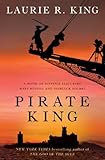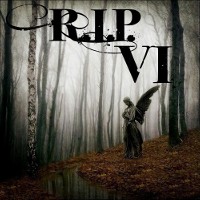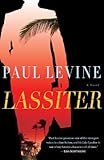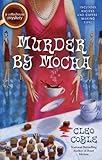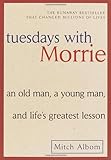Pirate King
Laurie R. King
Description (from Amazon.com):
In this latest adventure featuring the intrepid Mary Russell and her husband, Sherlock Holmes, New York Times bestselling author Laurie R. King takes readers into the frenetic world of silent films—where the pirates are real and the shooting isn’t all done with cameras.
In England’s young silent-film industry, the megalomaniacal Randolph Fflytte is king. Nevertheless, at the request of Scotland Yard, Mary Russell is dispatched to investigate rumors of criminal activities that swirl around Fflytte’s popular movie studio. So Russell is traveling undercover to Portugal, along with the film crew that is gearing up to shoot a cinematic extravaganza, Pirate King. Based on Gilbert and Sullivan’s The Pirates of Penzance, the project will either set the standard for moviemaking for a generation . . . or sink a boatload of careers.
Nothing seems amiss until the enormous company starts rehearsals in Lisbon, where the thirteen blond-haired, blue-eyed actresses whom Mary is bemusedly chaperoning meet the swarm of real buccaneers Fflytte has recruited to provide authenticity. But when the crew embarks for Morocco and the actual filming, Russell feels a building storm of trouble: a derelict boat, a film crew with secrets, ominous currents between the pirates, decks awash with budding romance—and now the pirates are ignoring Fflytte and answering only to their dangerous outlaw leader. Plus, there’s a spy on board. Where can Sherlock Holmes be? As movie make-believe becomes true terror, Russell and Holmes themselves may experience a final fadeout.
Pirate King is a Laurie King treasure chest—thrilling, intelligent, romantic, a swiftly unreeling masterpiece of suspense.
Review:
I’ve been a fan of Laurie R. King’s Holmes and Russell series since it began, so you know I was eagerly awaiting Pirate King. I bought when it came out, but saved it to savor in October, because mysteries are better when the weather begins to turn cool.
I’m also a fan of Gilbert and Sullivan’s The Pirates of Penzance, and it’s cheesy musical social satire, so the fact that Ms. King combined the two in this latest novel (which, admittedly, has much more Russell than Holmes in the first half of the story) made me deliriously happy.
I loved seeing Pirates through Mary Russell’s turn-of-the-century feminist eyes. I loved the way King had a movie about a movie about a play as the center of the novel – a preposterous situation – without it seeming preposterous. I even loved that much of the action took place in Morocco, a place that keeps haunting me in the books I read, and a place I’ve always wanted to visit.
Is there anything I didn’t love? I (still) wish we got to see more of Holmes and Russell having down time, to see the reality of their relationship. I felt there wasn’t quite enough Holmes in this entry into the series, and that when he does show up it’s a little anti-climactic.
Overall, however, I’m still a fan, although I was reading this during the same period of time that I was doing my annual re-watching of The West Wing, and I think Aaron Sorkin’s love of Gilbert and Sullivan might have colored my response to this novel, just a bit.
Pirate King
Laurie R. King
Bantam, September, 2011
320 pages
Buy the book from Amazon.com >>

